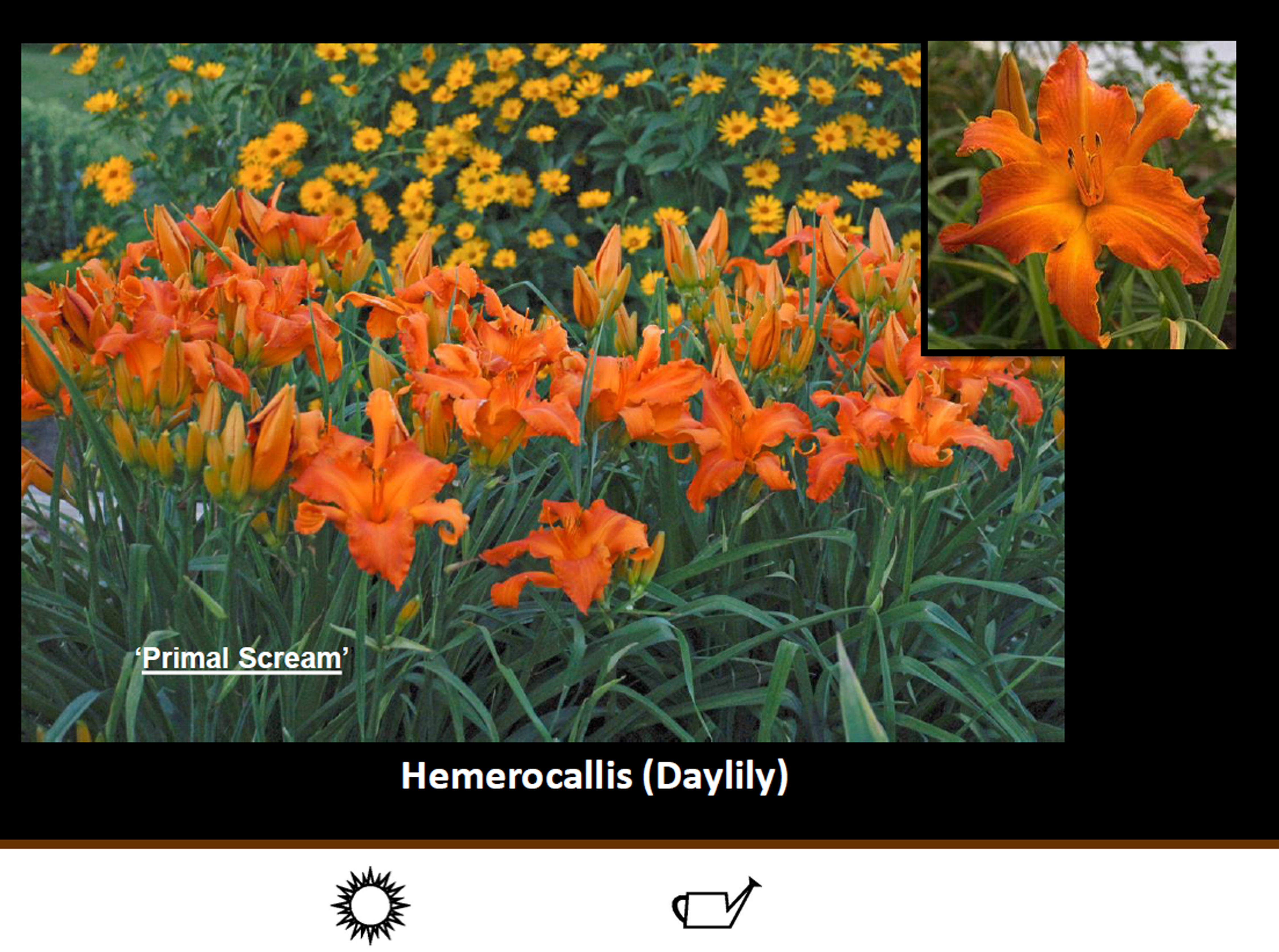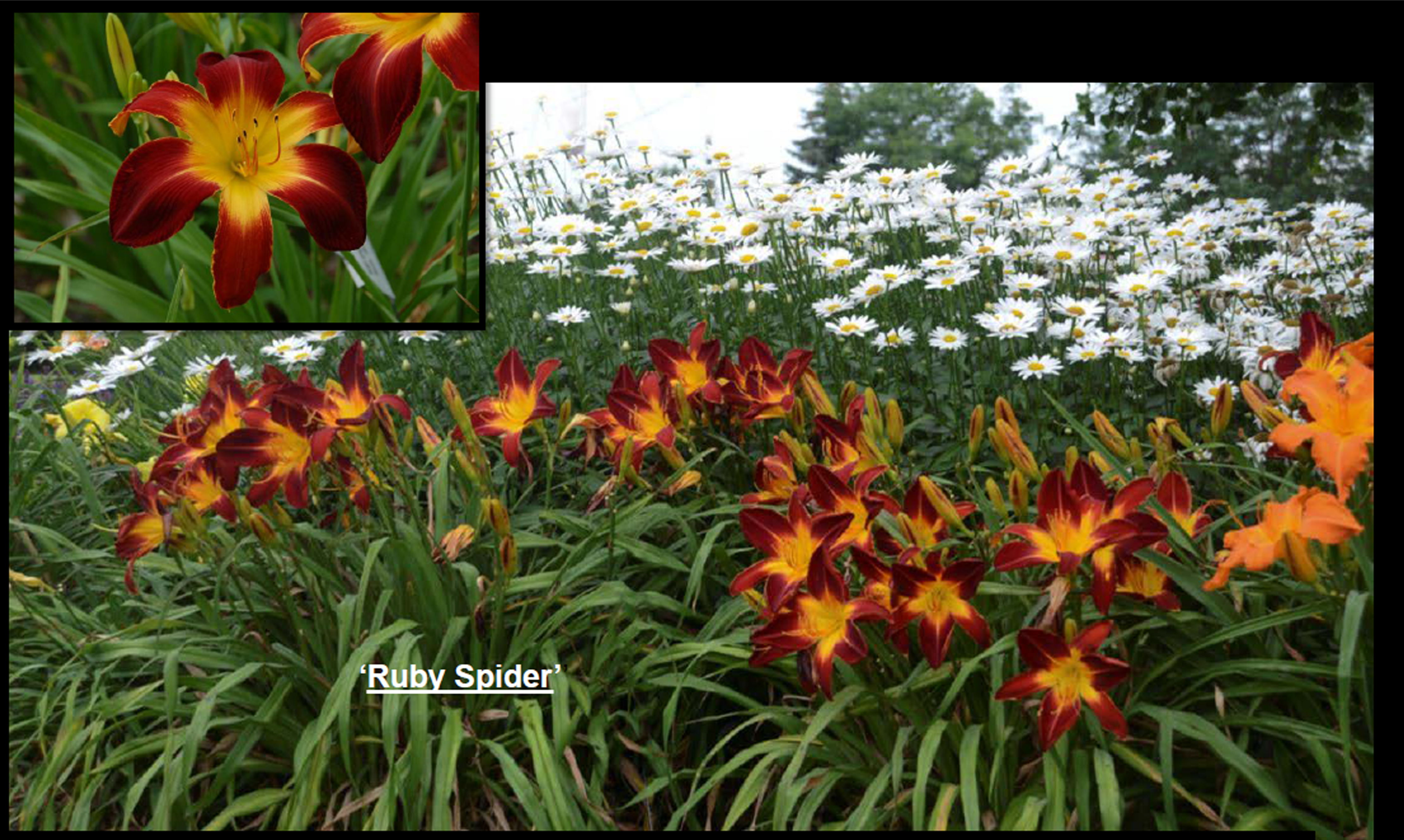My earliest introduction to daylilies was in my grandmother’s garden when I was a small child. I remember being entranced by the bright yellow blooms one day and devastated the next when half of them were lying on the ground, dead. Somehow, in my mind, it was my fault that they were dead; I should never have played with them. I think I must have carried that guilt around with me for years because I was never that fond of daylilies.
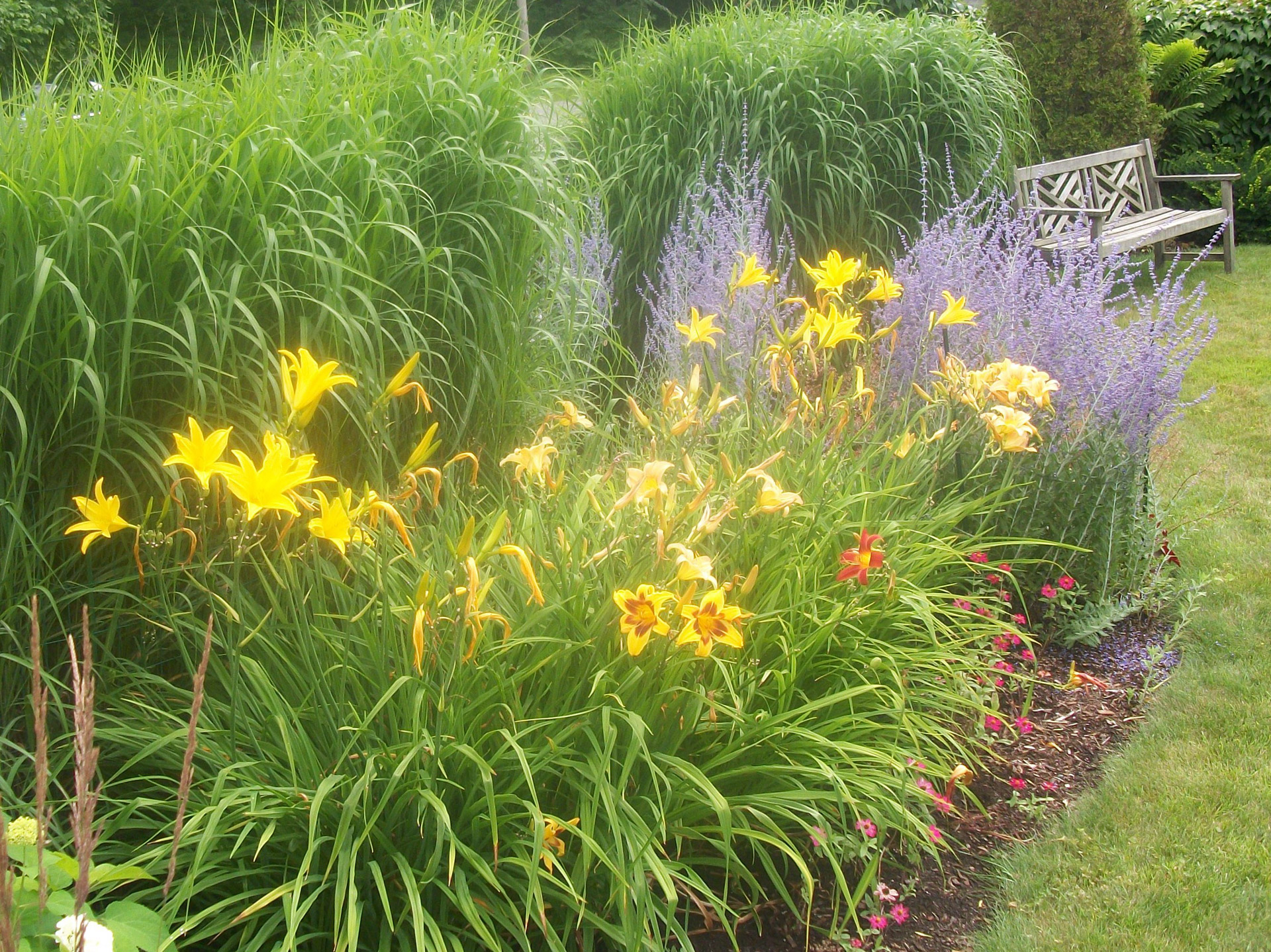
In the late 70s and 80s my husband and I owned and operated a nursery/garden center in northern Missouri. I ran the garden center and greenhouses where we grew hundreds of herbs and perennials along with our annuals.(Perennials had not become popular yet. They were really a hard sell back then!) One of the plant varieties that we were advised to grow was Hemerocallis, or daylilies. I was not thrilled with the advice, but after working with them for several seasons and seeing how they performed in the field and in my own garden, I began to develop a fondness for daylilies that has since blossomed into true love. In my mind, daylilies are an almost perfect plant.
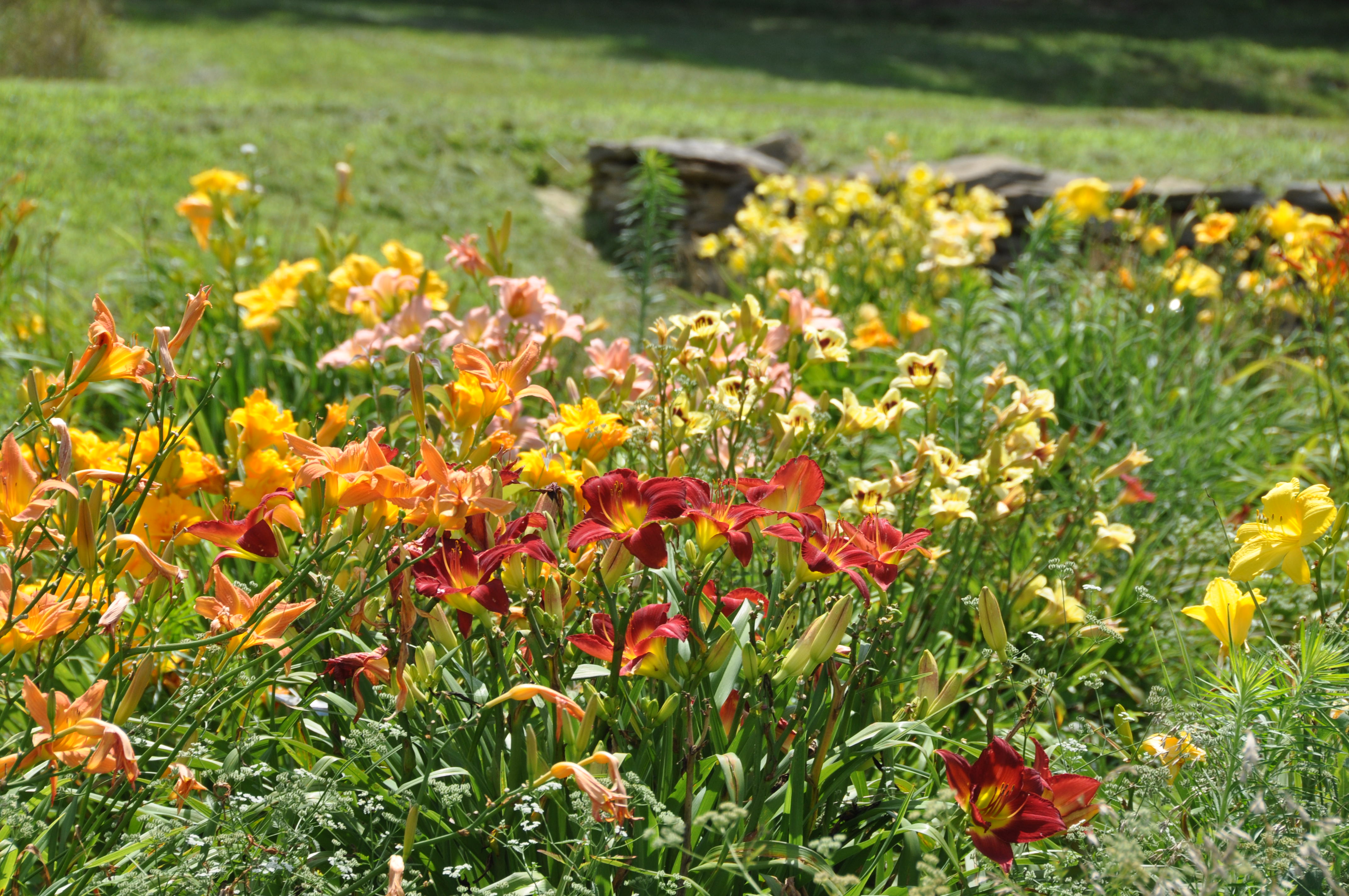
The name itself, Hemerocallis or hēmera which means ‘day’ in Greek and kallos which means ‘beauty,’ perfectly describes the flower. As I learned in my childhood, each beautiful flower lasts only one brief day. Each plant though, produces many stalks each with many buds opening over many, many days. Some of the newer varieties even will bloom several times throughout the season while other varieties will hold their blooms for several days. Most bloom during the day, but some bloom at night.

Many people mistakenly assume that daylilies are native plants since they grow so profusely along the roadsides throughout the country. Daylilies, which are not really lilies, are actually native to Asia. Some believe that they were introduced in Europe as early as the 1500s and came to the New World in the 1600s. They quickly became prized garden flowers due to their ability to survive and thrive just about anywhere, under any conditions and without much care. Those same characteristics are valued today.

Daylilies are truly tough plants. They tolerate a variety of soil and light conditions.(Mine are flourishing even in my rocky, quarry soil!) They withstand drought conditions, rarely succumb to insects or diseases and are hardy in a huge range of climate zones. Depending on the cultivar, daylilies can be planted in zones 3 – 9 and I have recently seen one listed for zone 10. Their blooms, ranging in size from under 3 inches to over 4 ½ inches in diameter, are even considered edible — especially by deer
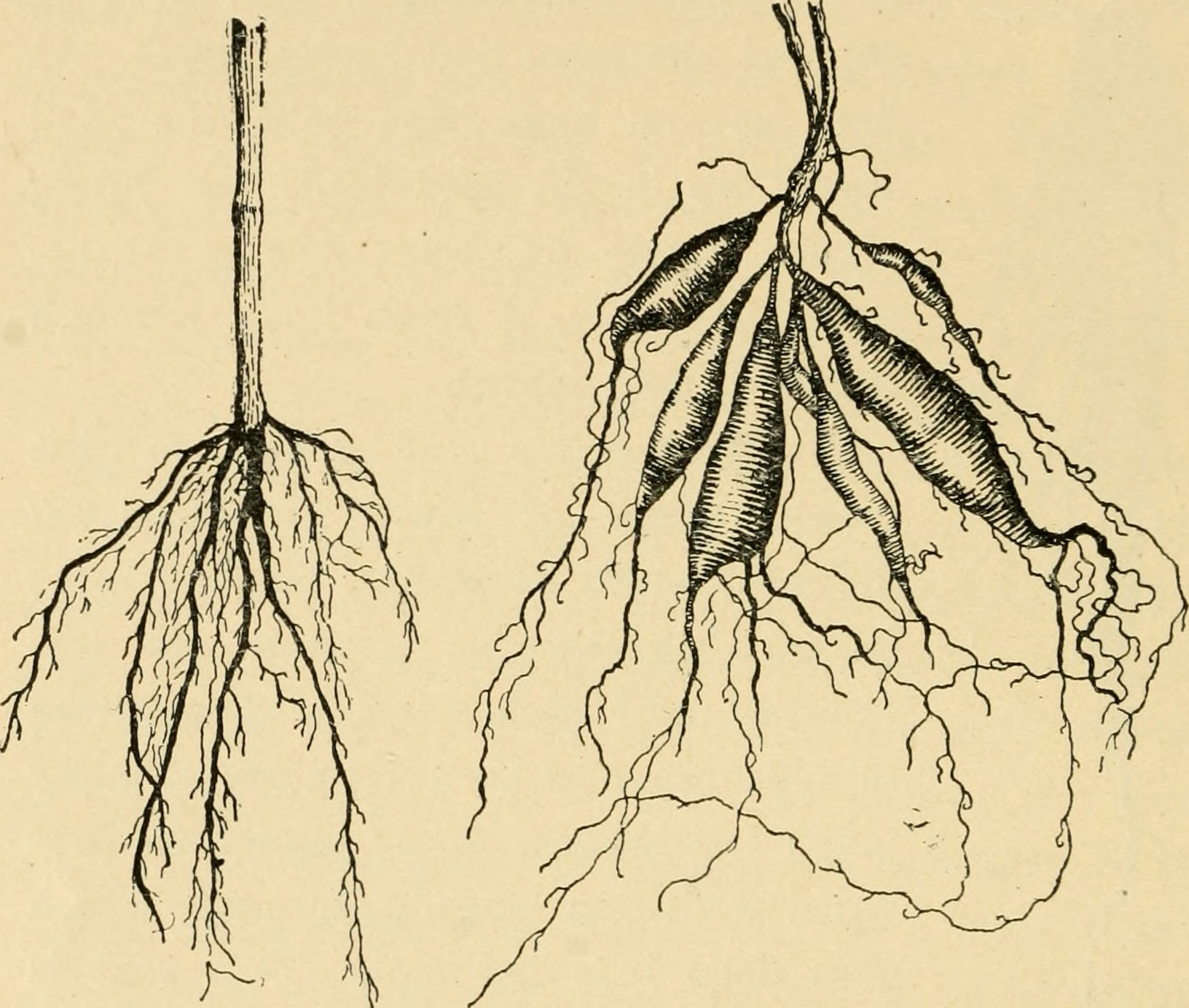
Daylilies grow in clumps with root systems that are either fibrous or tuberous. The crown is the area between the leaves and the roots. It produces both the “fans” and the scapes from the upper side. Fans are the flat leaf clusters which are shaped like a fan, and the scapes are the stalks from which bud-bearing branches and leaf-like bracts emerge. Flower scapes can be as short as 6 inches or as tall as 3 feet or more.

Many varieties of daylilies die back completely in the winter. New foliage emerges from resting buds in the crown in the spring. These are known as deciduous daylilies. Other types, called evergreen daylilies, retain their leaves, remain green and may even grow new foliage throughout the winter months if the temperatures are mild. Strangely enough, cold-hardiness is not tied to the retention or loss of foliage. Daylilies that retain their foliage can be extremely hardy or extremely tender. If in doubt, it’s usually best to choose varieties that have been proven successful in the area.

Bloom time for daylily cultivars can range from early spring to very late in the fall. By choosing cultivars that have a variety of bloom times or ones that are rebloomers, daylily beds can be in full flower the entire season.
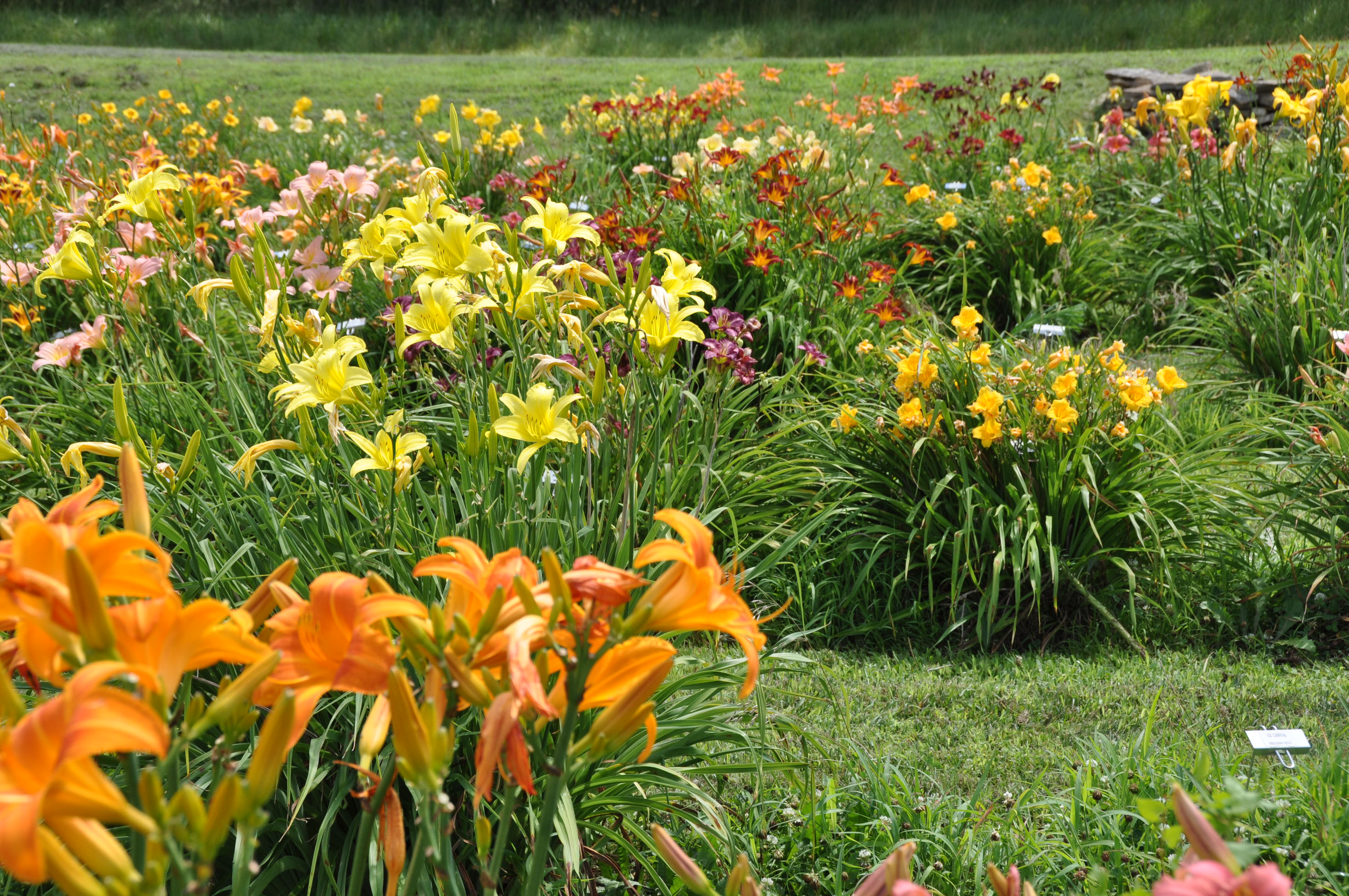
With over 84,000 cultivars available today, daylilies can be found in colors ranging from a delicate, cream shade of white to a rich, dynamic purple. They are found as solid colors, blends of colors, multicolored, dusted with color, banded by color or with eyes. The blooms may be single or double or spider (length to width ratio of 4:1) in form. They can be flat or circular or triangular or star-shaped, to name just a few. The petals can be smooth, or ribbed or even resemble a delicate crepe fabric.
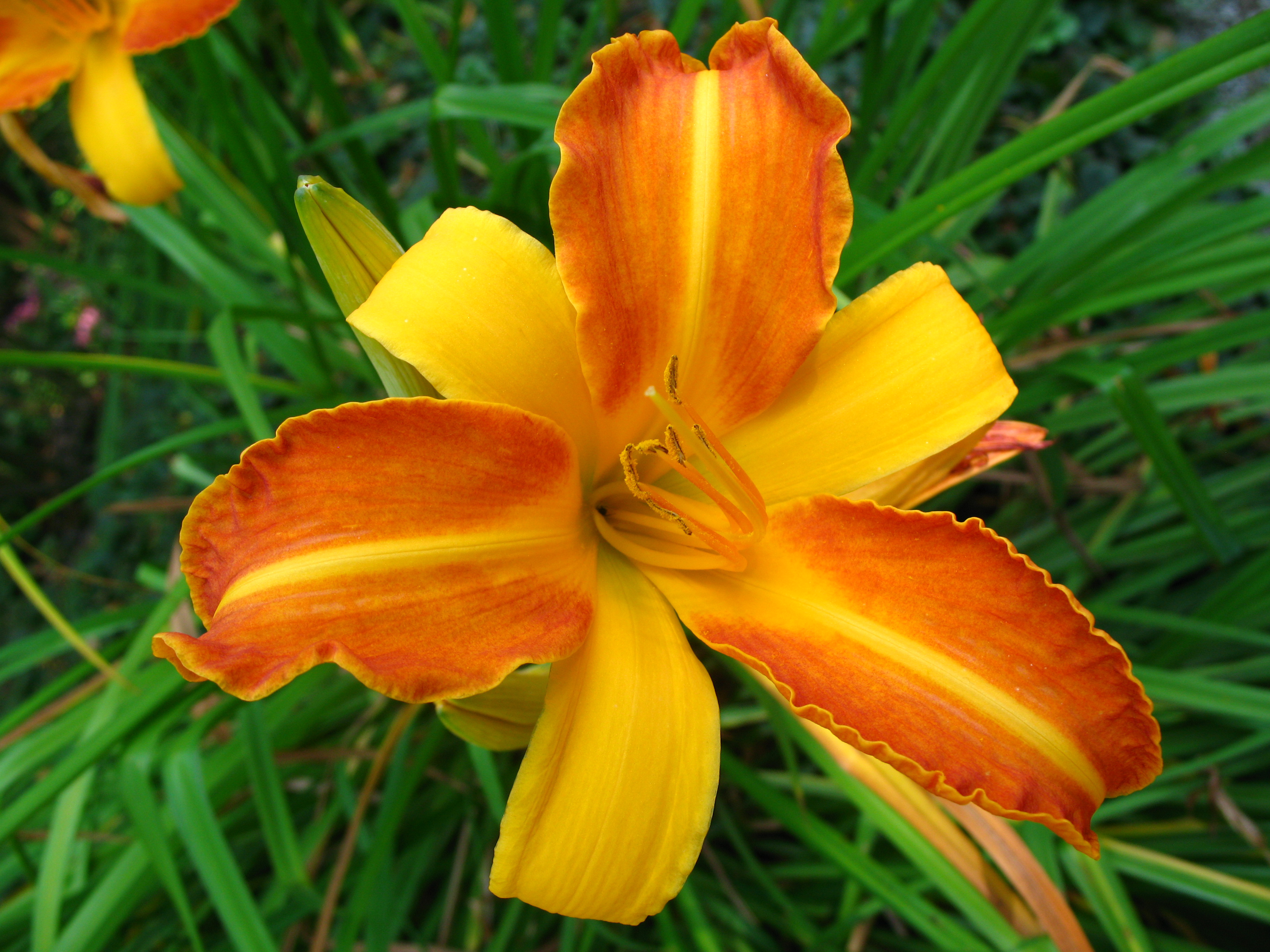




The almost perfect perennial is also almost perfect as a landscape element. Daylilies can be interspersed as accent plants in foundation plantings and mixed borders or massed in beds to serve as a focal point. Massed daylilies are effective ground covers, suppressing weeds, preventing soil erosion and covering hillsides too steep to mow. Daylilies work well as edging on pathways to gently remind walkers to stay on the path and smaller varieties do well in containers.

Early spring bulbs that naturalize, such as daffodils, grape hyacinths and crocus, are great companion plants for daylilies. When the bulbs’ leaves begins to fade, the new, fresh leaves of the daylilies distract the eyes and serve as an attractive cover to the dying foliage. Since tulips and hyacinths need to be dug and replaced every few years, they are not usually recommended as companion plants.

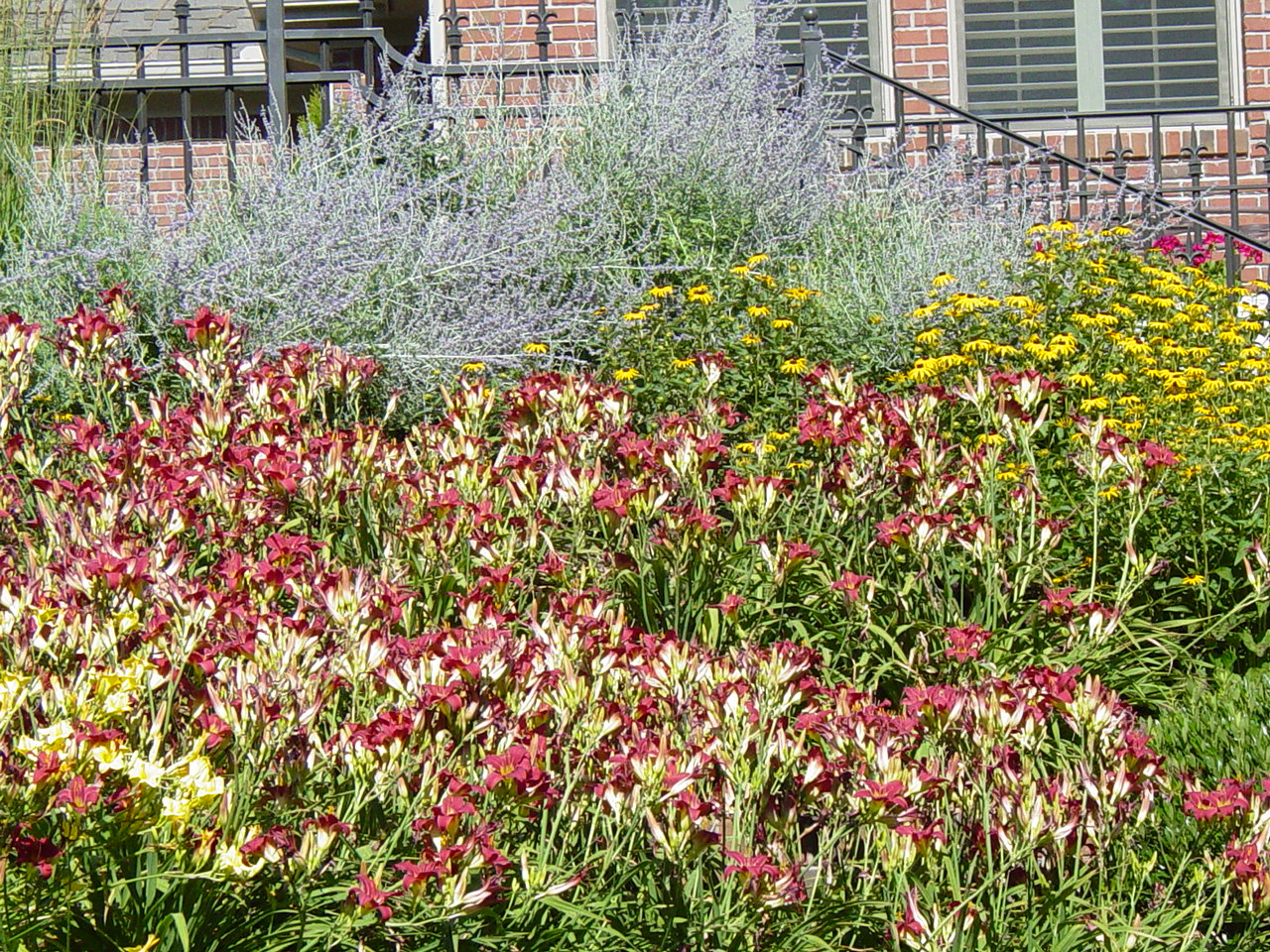

With over 84,000 cultivars on the market today, choosing the right ones can be difficult. The designers at Embassy Landscape Group consider the following to be the “Best of the Best” for 2018. As you begin your spring planning, think about adding some of these varieties to your garden. We know you’ll pleased with the results.
